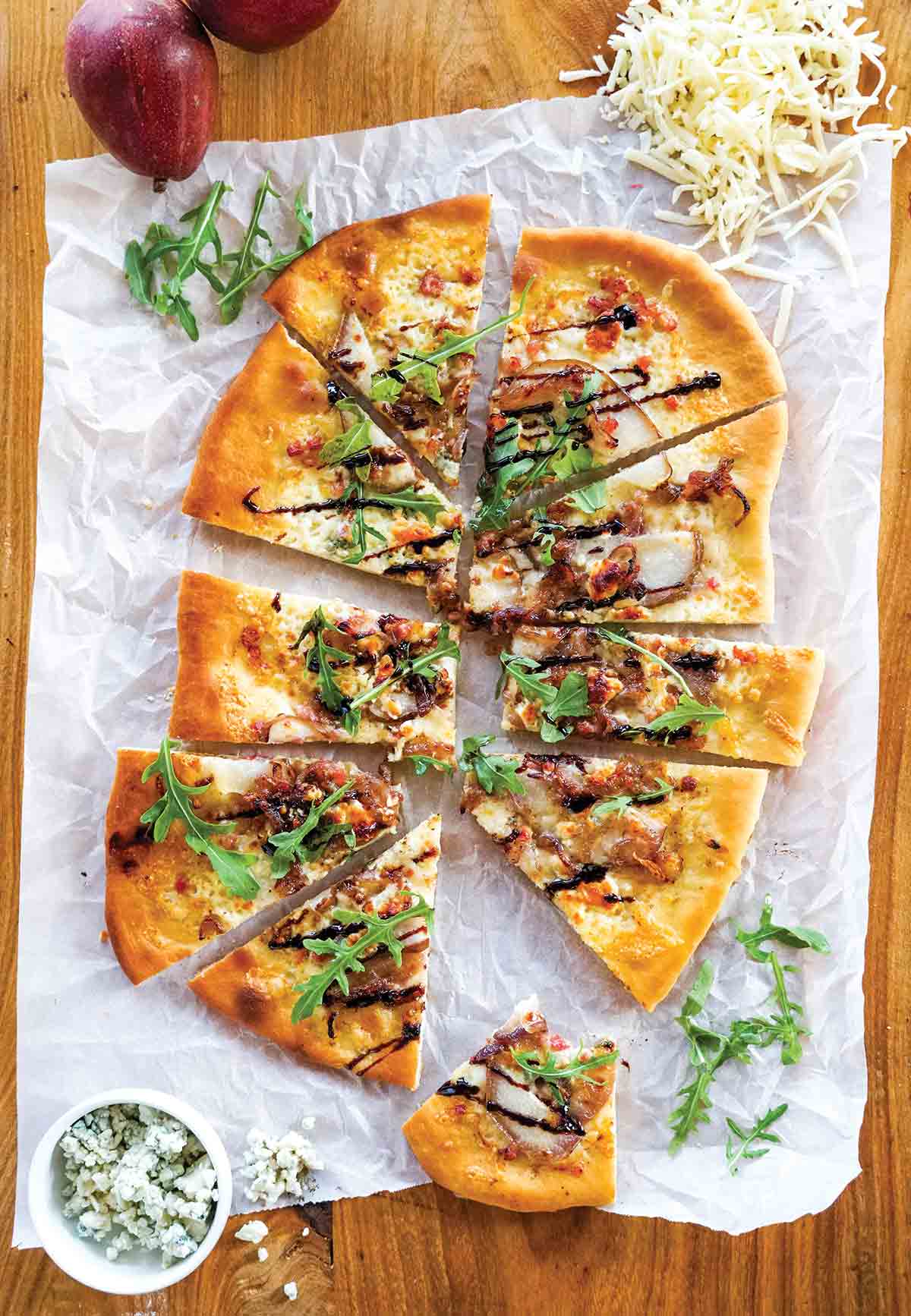
While the idea of making flatbread from scratch may seem a bit daunting, fear not. The dough is easy to put together and the toppings can be prepared while the dough rises. All that’s left to do is to bake and devour.
Flatbread FAQs
In a small saucepan, bring about 1 cup of balsamic vinegar to a boil, then reduce heat to maintain a simmer. Let the balsamic vinegar reduce until it coats the back of a spoon, about 10 minutes. Let cool completely. The reduction will continue to thicken as it cools. If you’re sensitive to the smell of vinegar, you’ll want to keep your hood fan running while you reduce it.
We think the pancetta, pear, onion, and cheese combination is pretty marvelous, but really, the sky is the limit when it comes to topping your flatbread. Any combination of your favorite meats, cheeses, and thinly sliced vegetables will work here.

Want to Save This?
More Cheesy Bites Recipes
Write a Review
If you make this recipe, or any dish on LC, consider leaving a review, a star rating, and your best photo in the comments below. I love hearing from you.–David
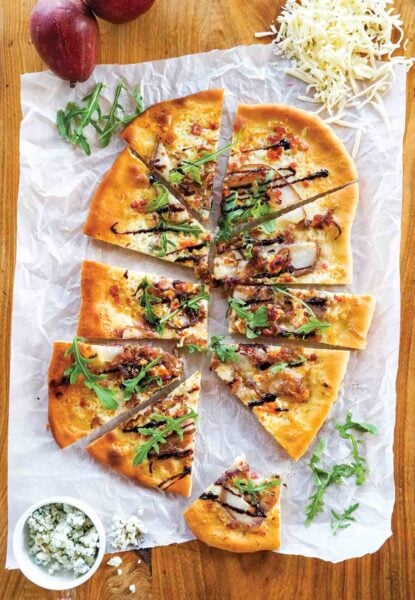
Flatbread with Pancetta, Pear, and Blue Cheese
Ingredients
For the dough
- Two (1/4 oz) packets active dry yeast (4 1/2 teaspoons)
- 1 3/4 cups warm water
- 4 2/3 cups all-purpose flour, plus more for the work surface
- 1 1/2 tablespoons kosher salt
- 1 tablespoon olive oil
For the toppings
- 4 ounces pancetta, finely diced
- 1 medium red onion, sliced into 1/4-inch (6-mm) thick half rings
- Kosher salt
- 2 tablespoons (1 oz) unsalted butter (optional)
- 1/4 cup dry white wine
- 4 ounces shredded Fontina
- 1 Bosc pear, thinly sliced
- 2 to 3 ounces crumbled blue cheese
- 1 to 2 cups arugula
- Leaves from 2 fresh sprigs of thyme
- Balsamic vinegar reduction or glaze
- Olive oil
Instructions
Make the dough
- In a glass measuring cup, whisk together the yeast and warm water. Allow to stand undisturbed until the yeast begins to foam, about 10 minutes.
- While the yeast is proofing, add the flour and salt to the bowl of a stand mixer fitted with the dough hook attachment. Once the yeast has become foamy, add it to the flour mixture. Pour in the olive oil. Knead on low speed just until the flour is fully incorporated and the dough pulls away from the sides of the bowl. Do not overmix. Let the dough sit in the mixing bowl for 10 minutes.
- Turn mixer on low again for 1 minute. Remove the bowl from mixer, and cover with plastic wrap, allowing dough to rise until doubled, 1 to 1 1/2 hours.
Prepare the toppings
- While the dough is rising, toss the pancetta into a large skillet and cook over medium heat, stirring occasionally, until the fat renders and the pancetta becomes crisp, 6 to 8 minutes. Use a slotted spoon to transfer the pancetta to a paper towel-lined plate to drain.
- Add the onions to the rendered fat in the skillet, sprinkle with salt and cook over low heat, stirring occasionally. If the onions begin to stick to the pan, add a little butter as needed. When the onions become translucent, pour in the white wine, and reduce until thick and syrupy, about 5 minutes. Remove from heat and allow to cool before adding to the pizza.
Finish the dough
- Turn out dough onto a lightly floured surface. Split the dough in half, and form into smooth ovals. If you want to make smaller flatbreads, you can split into four ovals. Cover the dough with a tea towel and allow to rest for 10 minutes.
- Preheat the oven to 425°F (220°C). Line two rimmed baking sheets with parchment paper.
- Roll each ball of dough a couple inches smaller than the baking sheet and transfer them to the prepared baking sheets. Press the dough in the center, leaving a 1-inch (25-mm) border around the dough. Dimple the interior so it doesn’t bubble. Brush with olive oil and bake until light golden in color, about 10 minutes.
- Remove from the oven, brush with olive oil again, then top with Fontina, pear slices, caramelized onions, pancetta, and blue cheese. Bake until the cheese is melted and the crust is golden brown, 10 to 15 minutes more.
- Top each flatbread with a handful of arugula, thyme, and a drizzle of balsamic vinegar reduction. Cut into wedges or squares. Devour.
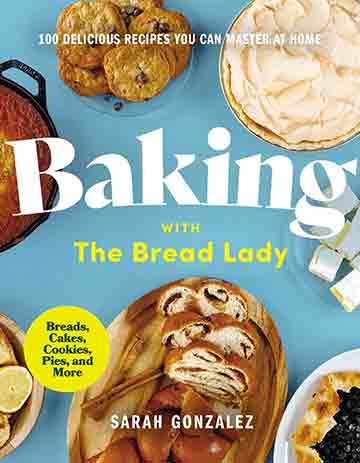
Explore More with AI
Nutrition
Nutrition information is automatically calculated, so should only be used as an approximation.
Recipe Testers’ Reviews
What a great combination of flavors! The pear and blue cheese are a natural pairing but the salty, crisp pancetta takes this flatbread over the top. Each element was in perfect harmony with all the others – the thyme, red onions and balsamic glaze rounded out the more powerful flavors. I loved the addition of arugula at the end – what a delicious way to have your salad!
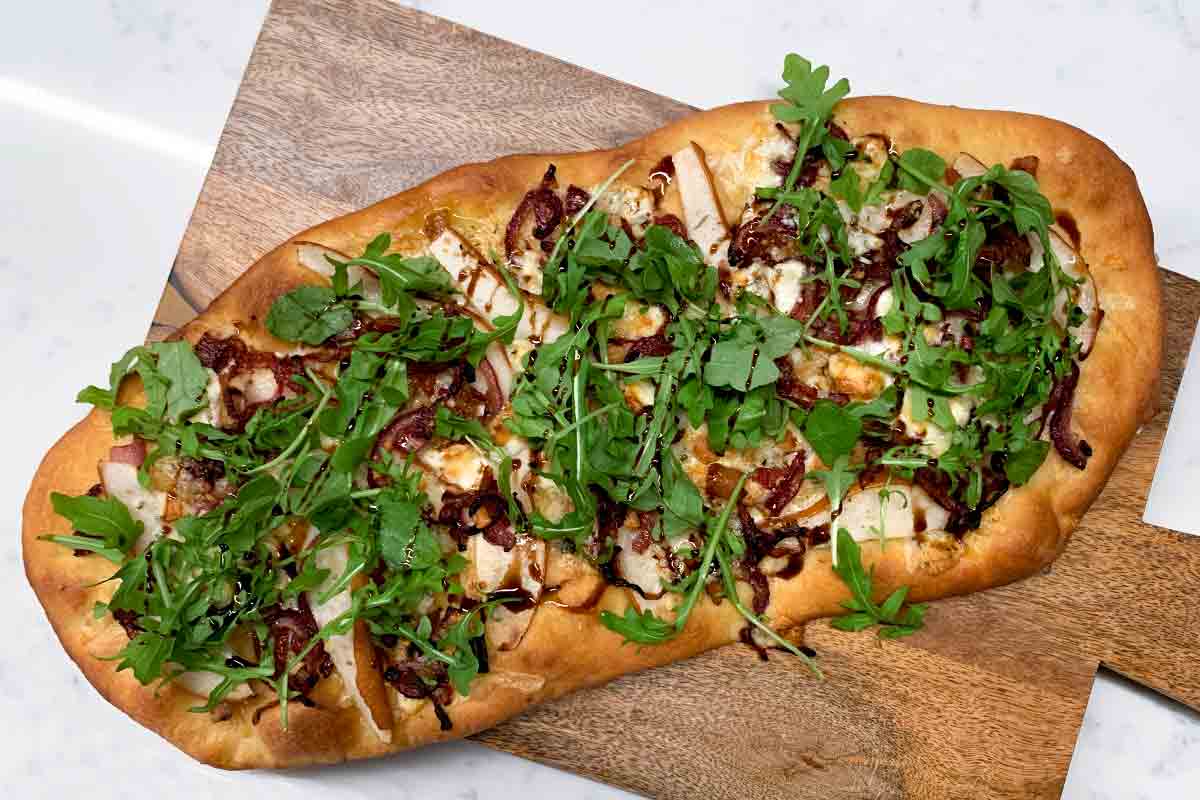
I divided the dough into two pieces but I think it would be much easier to work with and shape if it were divided into four pieces. I will probably add just a titch more fontina cheese next time because my love of cheese is fierce, but it was absolutely delicious with the amount stated in the recipe. I used a pizza stone to help ensure that the bottom got nice and crispy. My husband was quite skeptical of the ingredients (asking for pepperoni and mozzarella instead of pear and blue cheese!) but he loved it as well. I served this with a glass (or two) of chianti.
This flatbread with pancetta, pear, and blue cheese recipe had me at fruit, cured meat, and cheese. Classic flavors that have anyone who like them weak at the knees. I’ll confess, I have a long cooking history – professionally and as a home cook, and as a proclaimed “cook”, not baker, I steer away from yeast. Now I ask, “why?” This was simple, and (if I may say), amazing. I’m sure my dough texture will improve over time, but the flavors were so good, no one complained in the meantime. And the leftover dough made a delicious focaccia the next day with the leftover thyme and some chopped rosemary.
Well this is the fanciest flatbread to ever come out of my kitchen! This flatbread with pancetta, pear, and blue cheese recipe was perfect – I had absolutely no issues along the way and the results were fantastic. My husband said this was “very grown up” – we loved it, but it probably wouldn’t go over well with kids. We ate it for dinner, but it would be lovely cut into smaller pieces and served as part of an appetizer spread. I divided my dough into two large flatbreads and was really happy with the size. The only thing I’ll say is this – don’t bother getting your stand mixer dirty for the dough – it’s completely unnecessary! This is an easy one to mix up with your hands.
This flatbread with pancetta, pear, and blue cheese is so scrumptious and could easily be served as either a main course or appetizer (think elevated cheeseboard in flatbread form). I love recipes whose ingredients meet at the intersection of savory and sweet, where the best of both worlds are allowed to mingle harmoniously in every bite. Each component was delicious in its own right and the ratio of them all was well balanced and not overwhelming.
The flatbread was deliciously crisp on the bottom and fluffy on the inside, and it’s preparation was simple and forgiving enough so as not to add too much stress to the process. This recipe was also a nice incentive to branch out with different types of cheese, as I don’t often cook with blue cheese or fontina. Finally, the technique used to make the white wine onions is a good trick to keep in your back pocket, as it would be an elevated topping on all manner of other dishes. We ate our pizzas as a stand-alone dinner, and all felt quite satisfied.
My only critiques are that the addition of fresh arugula on top after baking sounds good in theory, but in practice it was actually rather messy and detracted from the other flavors. I think arugula on the side as a simple salad would be a more practical accompaniment, as I wouldn’t want to loose the peppery balance it adds to the experience entirely. The arugula on top also obscures how lovely all the toppings look on the pizza which I had given both time and effort to arrange artfully. I also found my flatbread a little thicker than I would have liked it, and that also felt like a slight distraction from the toppings. I chose to make 4 flatbreads and so I baked two per half sheet tray. There probably would have been room to roll them out thinner, and the thickness is personal preference at the end of the day, but perhaps it would be helpful to add a note that they do puff up a bit so rolling them proportionally thinner than desired is important.
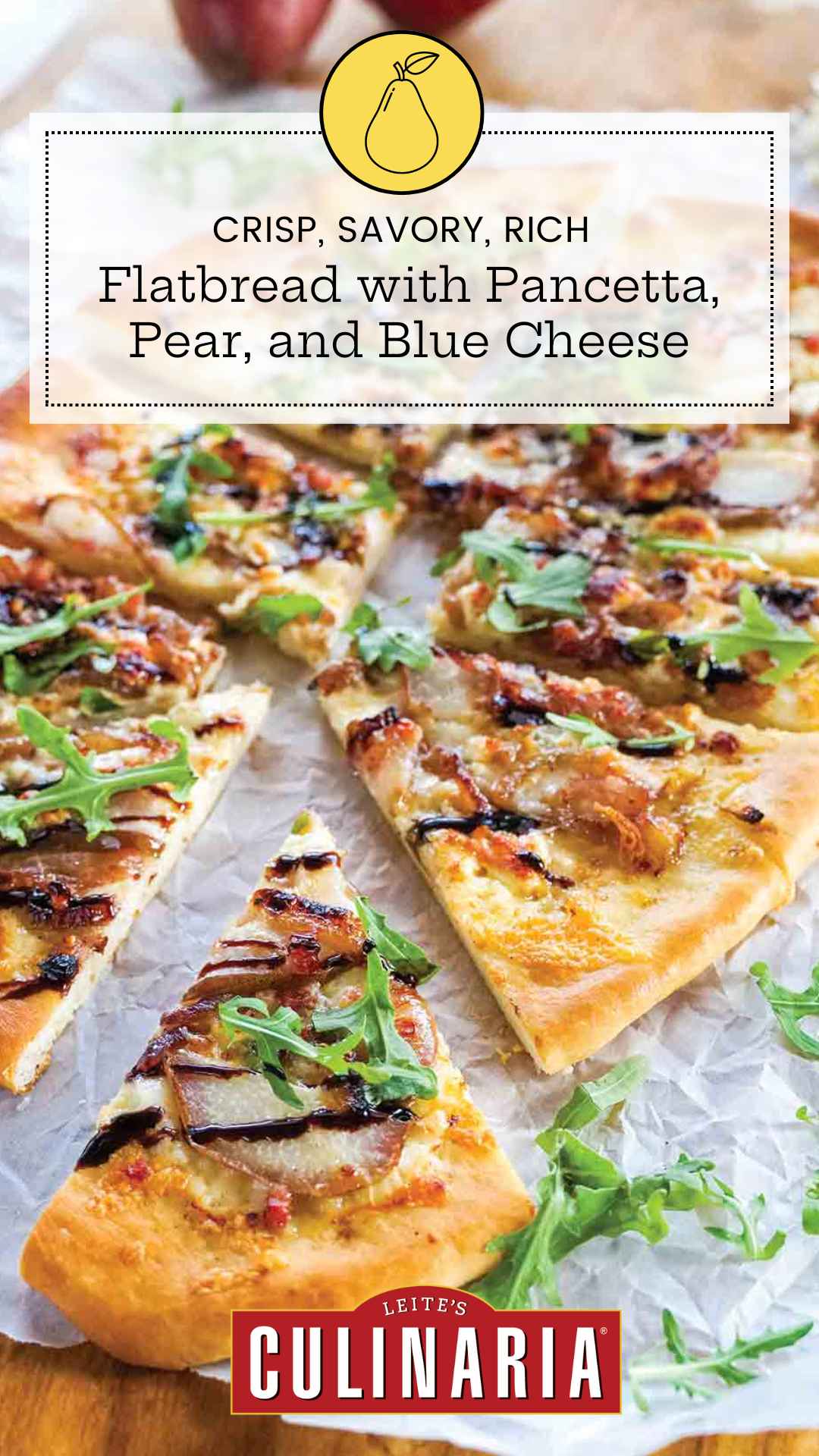
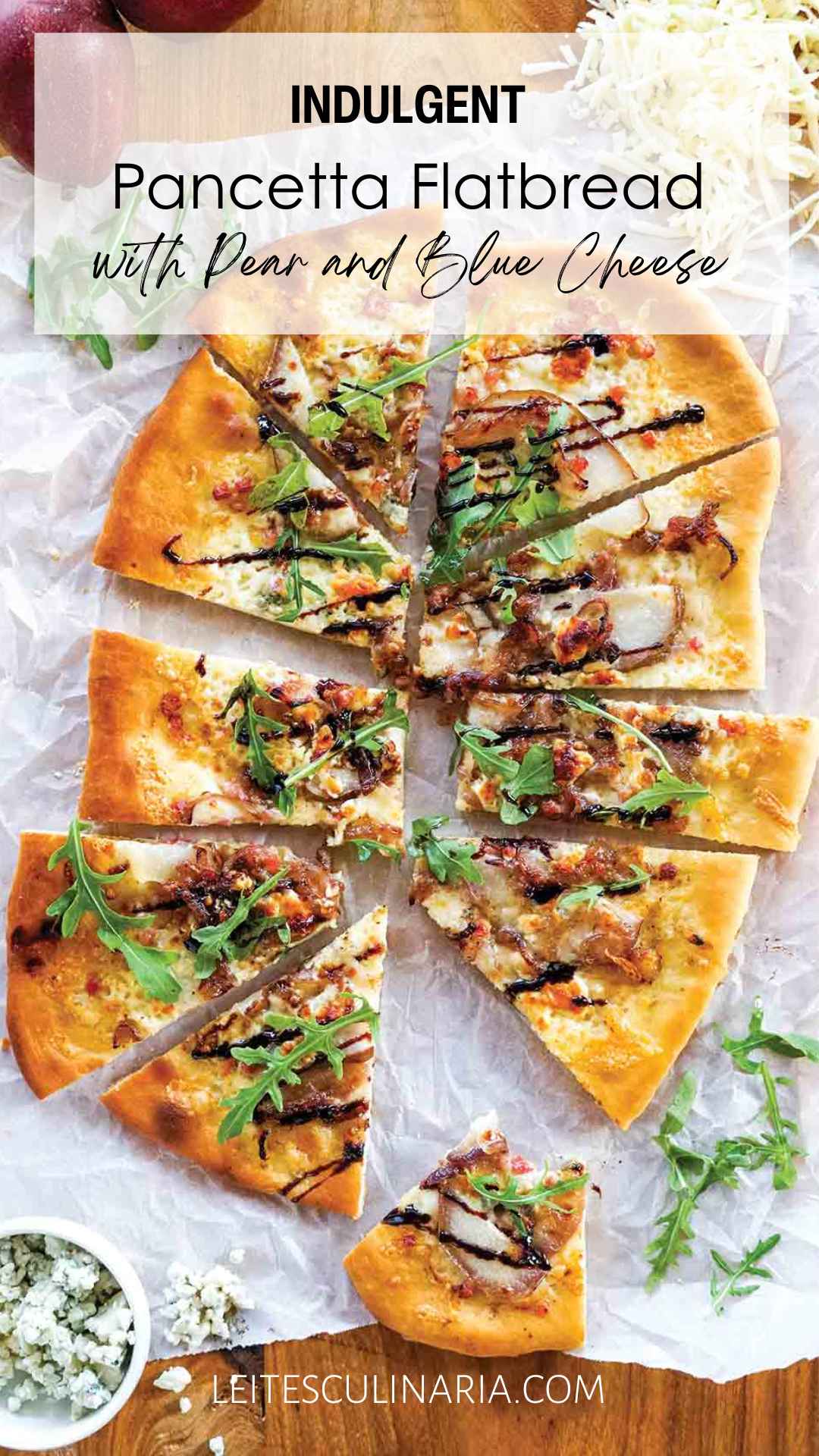
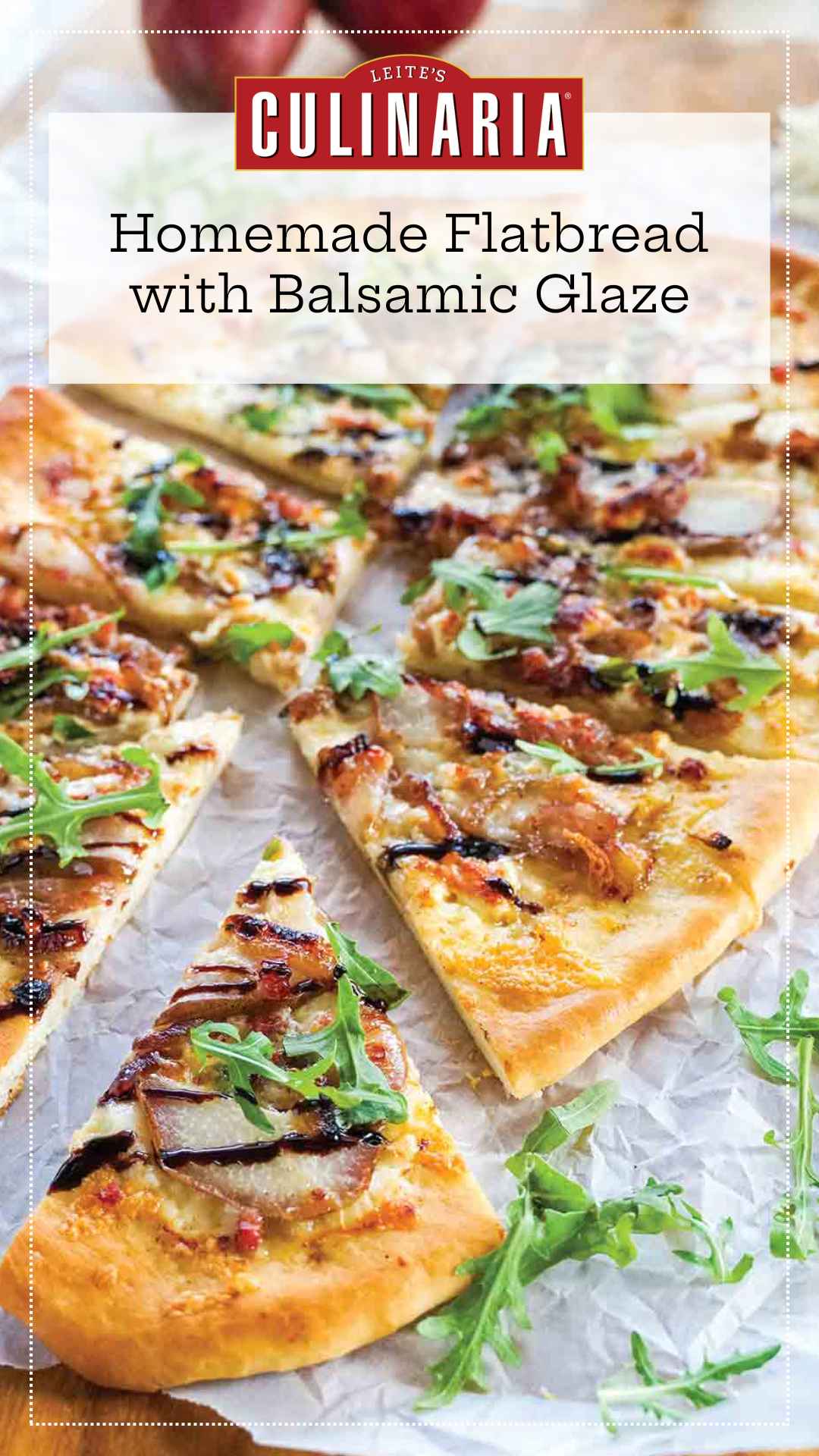
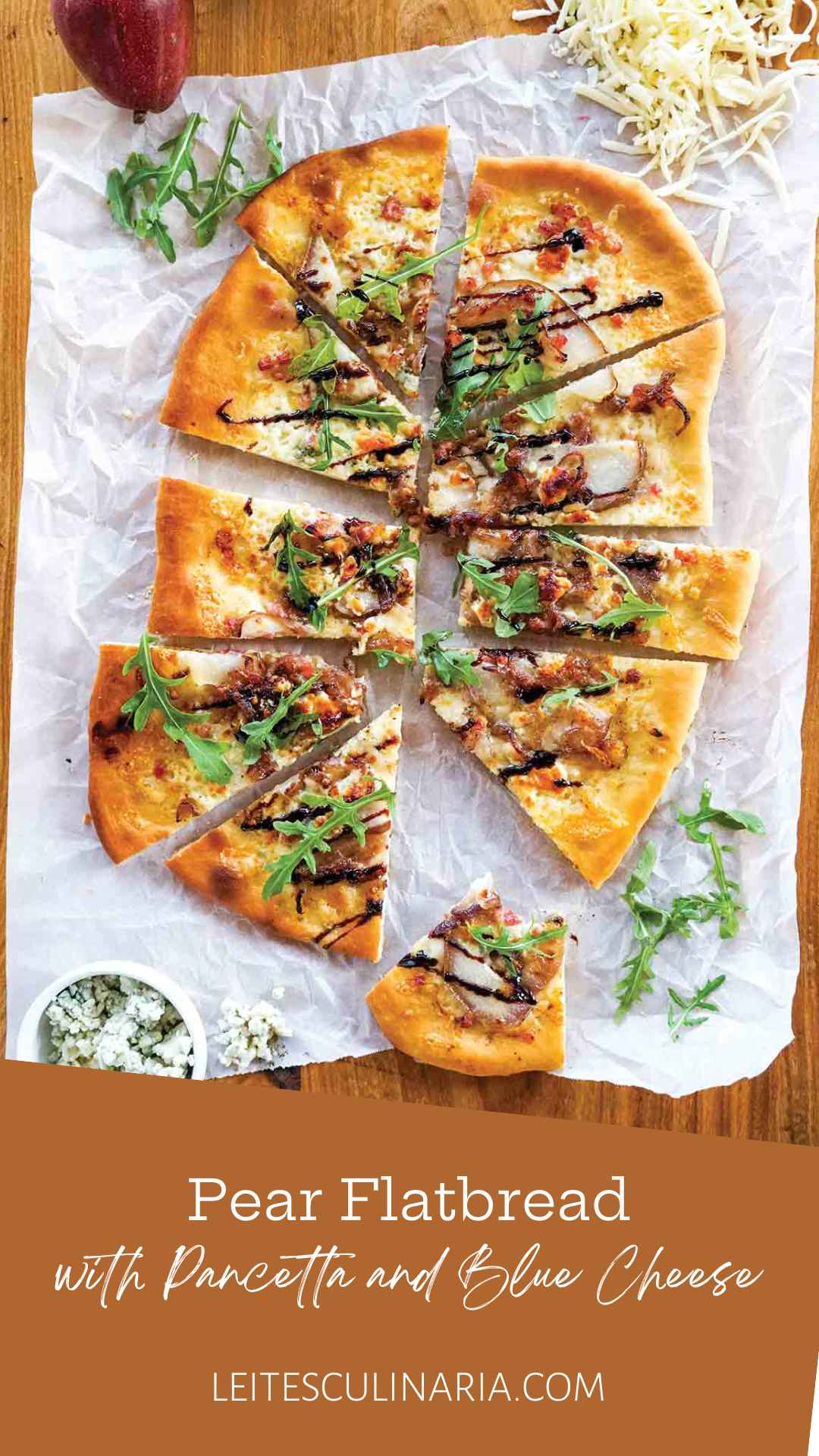

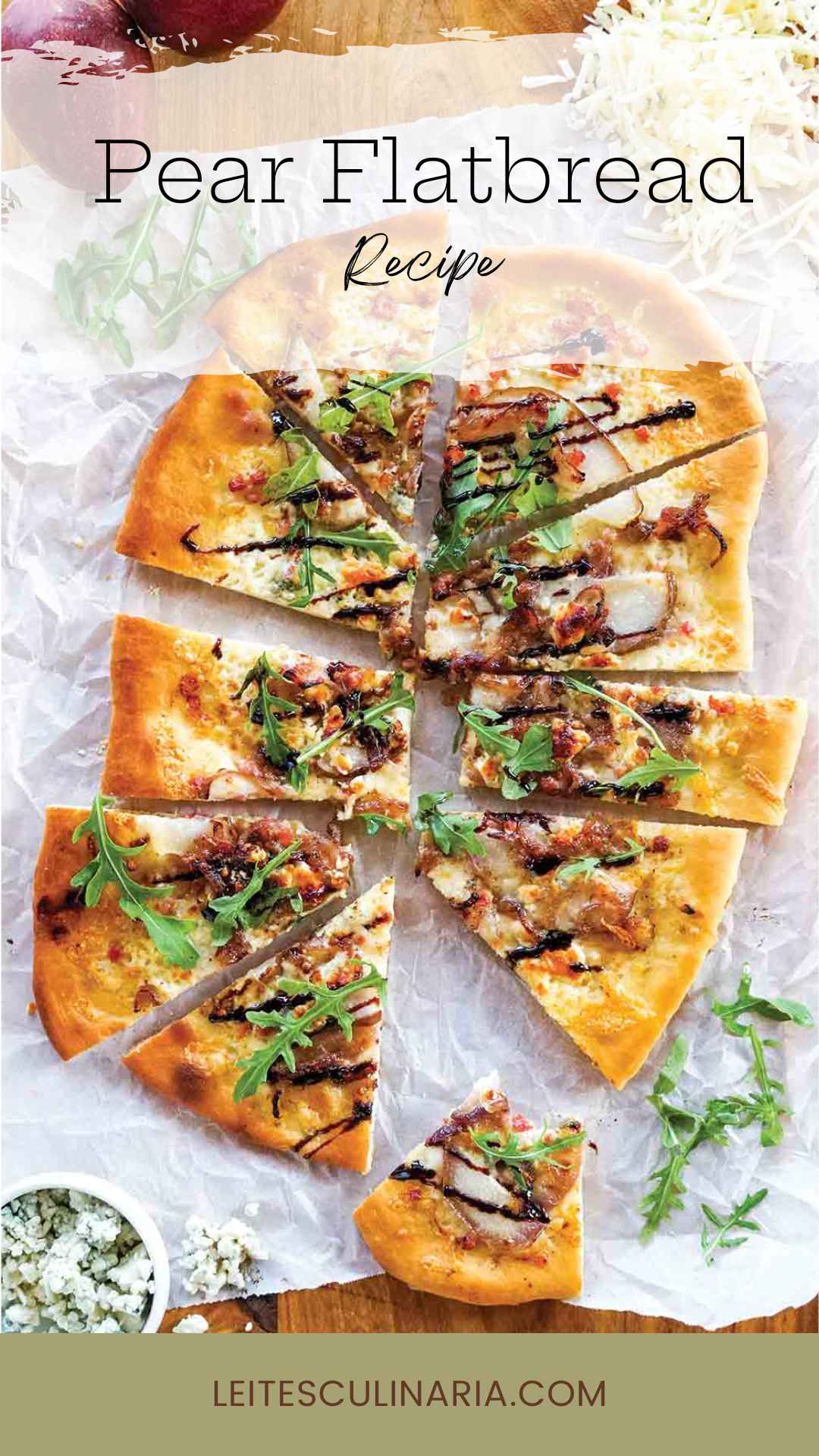

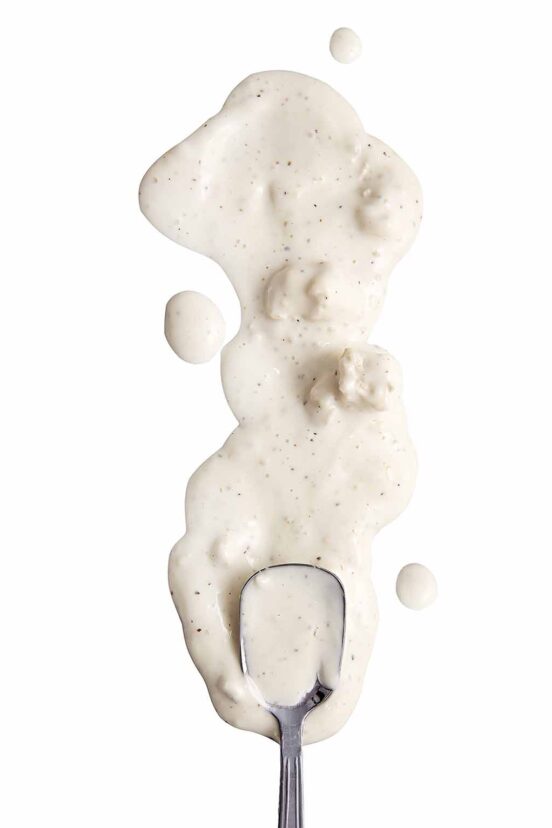




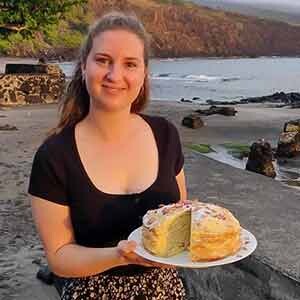










Is fontina d’aosta used or can the fontal fontina work here or even domestic fontina? They all taste so different from each other what is recommended here? Thank you.
Great question, Den M.! I think you could successfully use any one of those varieties with delicious results. There really are endless cheesy possibilities.